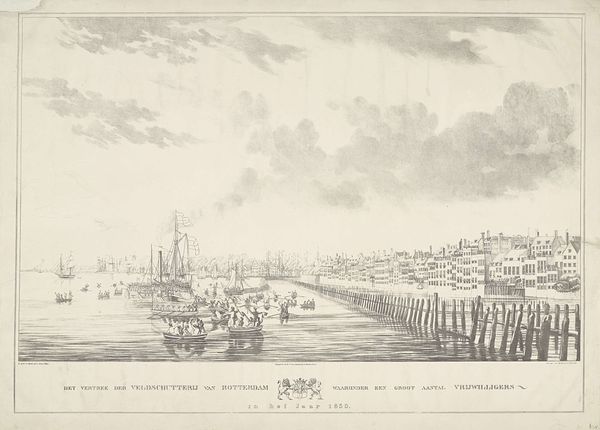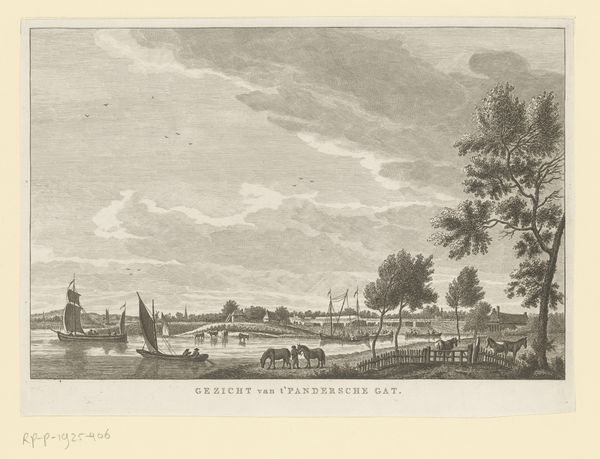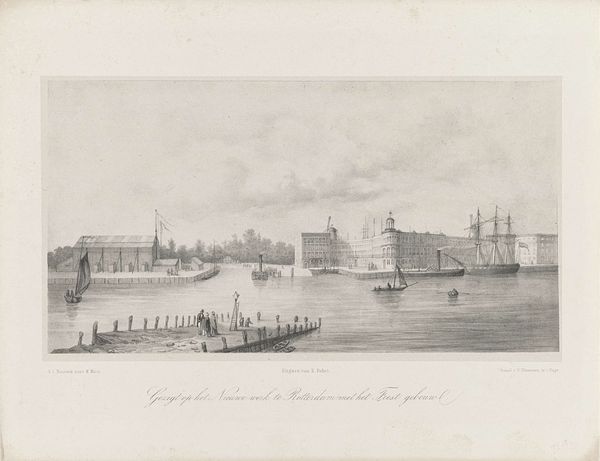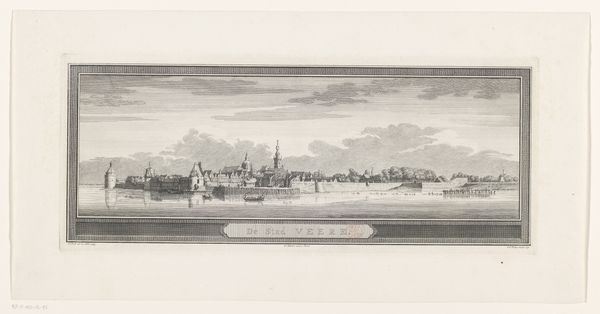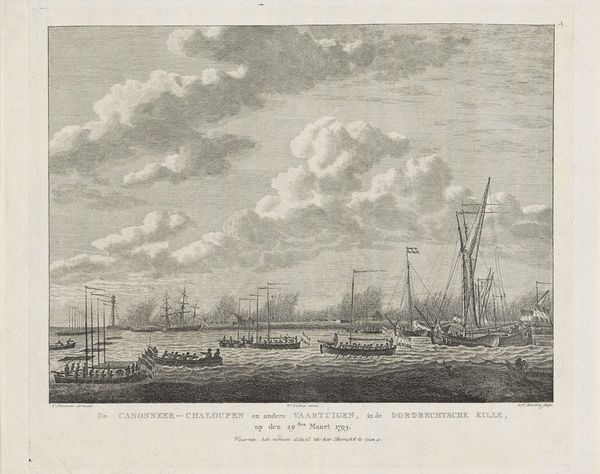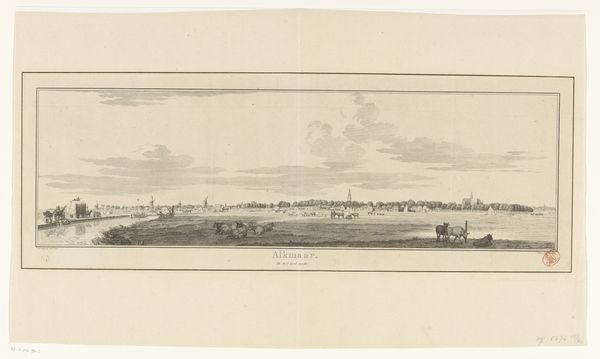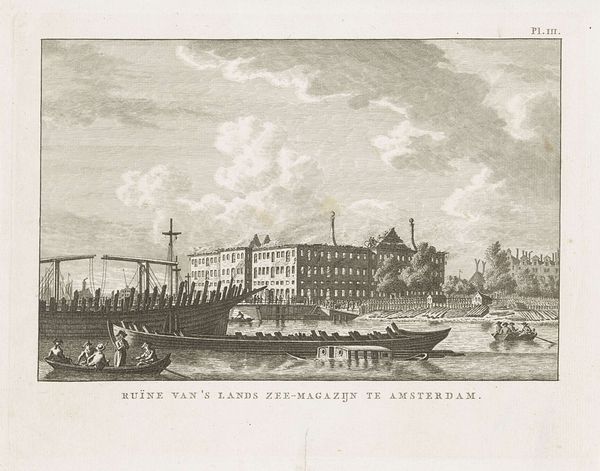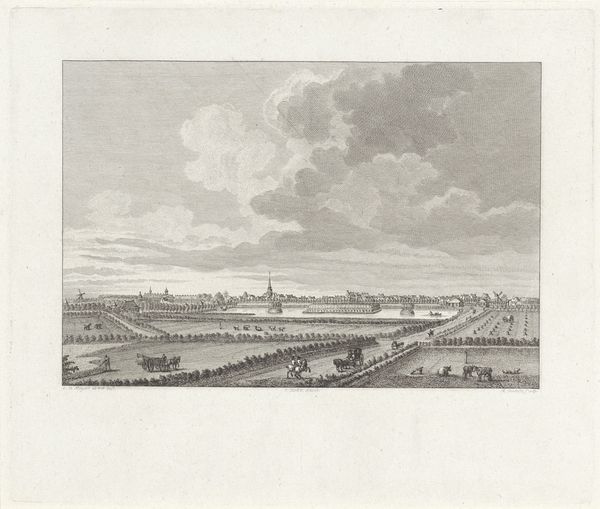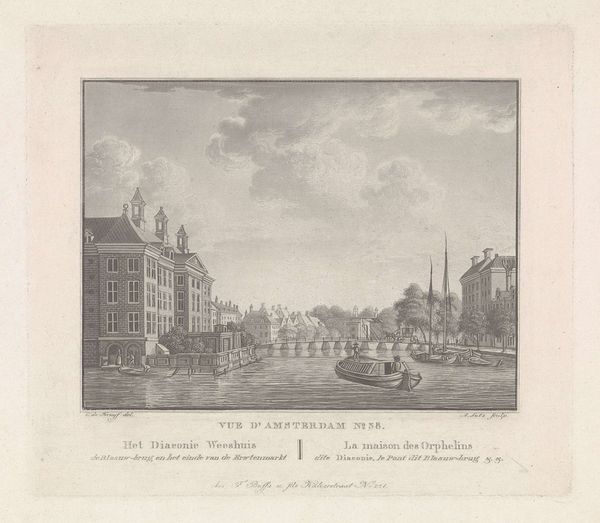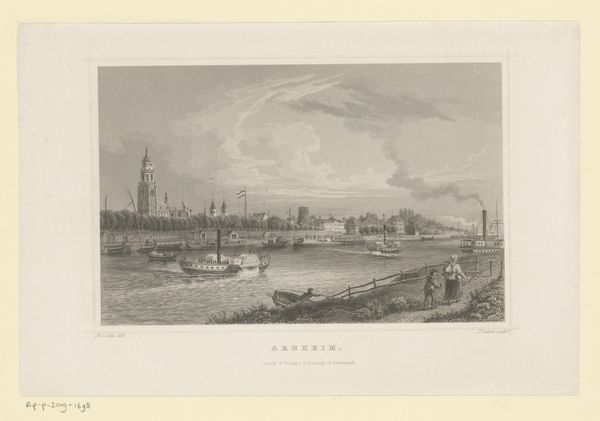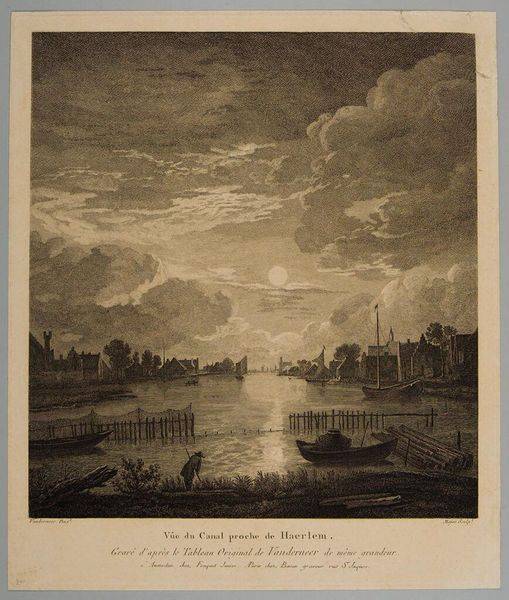
print, etching
#
neoclacissism
# print
#
etching
#
landscape
#
cityscape
#
history-painting
#
realism
Dimensions: height 227 mm, width 332 mm
Copyright: Rijks Museum: Open Domain
Curator: Looking at Izaak Jansz. de Wit’s "Overstroming te Kruiningen, 1808", made with etching, one is struck by its calm tone depicting such a destructive event. What's your first impression? Editor: Immediately, the wateriness of it all, unsurprisingly. The etching's greyscale renders a pervasive dampness—a lived-in feeling. You can almost smell the river and imagine the labor involved in holding back nature’s forces with human artifice. Curator: That relationship is quite present. Notice how the artist juxtaposes the human endeavor to rebuild the dike with the humbling vastness of the sky and water. One finds a certain stoicism there, a reflection of cultural resilience against disaster. The cloudscape, though lightly rendered, dominates. Editor: I see it less about resilience and more about the labor, the sheer effort represented by the built structure. Each etched line speaks to someone’s literal and physical toil, embedding it within the print’s materiality. It feels almost… pre-industrial in its depiction of collaborative action. Curator: Yes, the lines and repeated shapes perhaps tell a story about how the collective will tries to master and manipulate nature through hard labor, and indeed reflects an ongoing dialogue: the river as an icon for chaos. We return, again and again, to find new balance, new patterns. It seems the ships on the water embody the spirit of adventure as well as loss, calling to a rich maritime history. Editor: Etchings at that time had certain limitations: a commitment to detail and accessible mass reproduction, in tandem with celebrating feats of ingenuity. "Overstroming te Kruiningen, 1808" thus illustrates the relationship between the Dutch and water management. How might this etching have been seen, purchased and circulated among citizens? How did it affect their relationship to material risks and resources? Curator: In contemplating your remarks on this art object as artifact, this artwork seems to suggest a perpetual tension between culture, representation, and the relentless challenges of our shared environment. Editor: It's a document reflecting material labor, societal need, and the act of remembrance – holding the past, etched forever into a print.
Comments
No comments
Be the first to comment and join the conversation on the ultimate creative platform.
